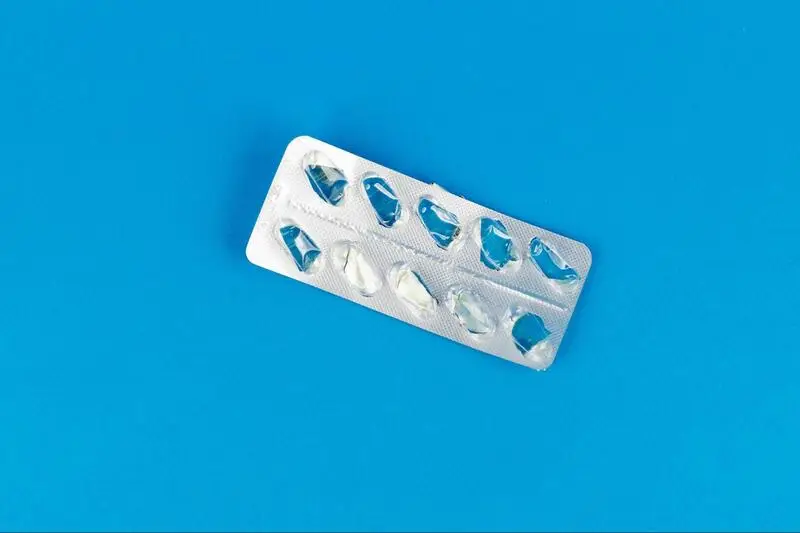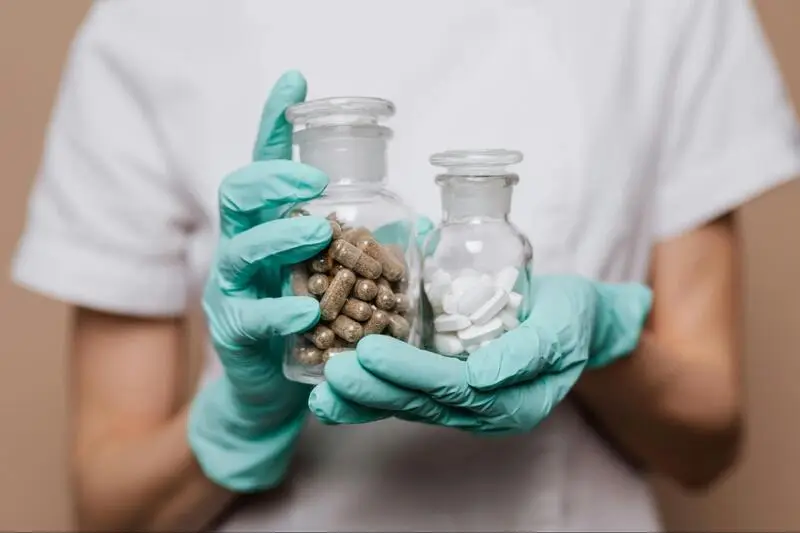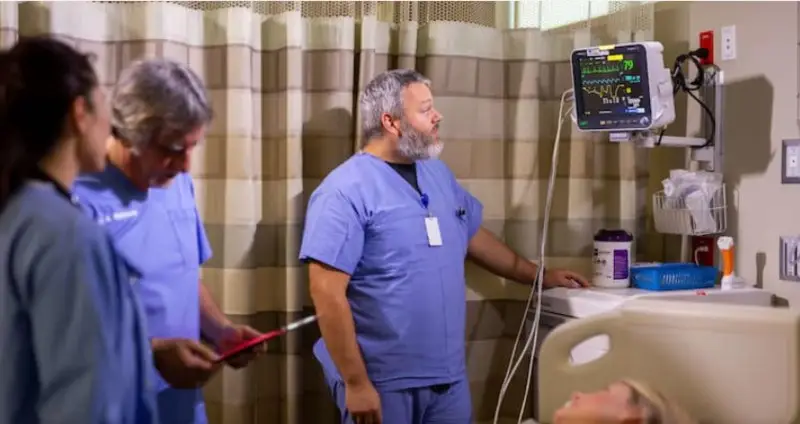Opioid detox methods encompass various approaches used to help people dependent on opioids withdraw from these drugs and eliminate them from their system. Although some of them are promoted as a cure or a quick fix for opioid dependence, simply detoxing from opioids without addressing the root of the problem will likely lead to relapse.
This article will explore different opioid detox methods and explain why ANR outshines these approaches in terms of safety and effectiveness.
What Is Opioid Detox, and What Are Its Key Goals?

Opioid detox (or opioid detoxification) is the process of clearing opioids from the body, which can be done at home or in a medical facility, such as a detox center. Depending on the method and the extent of opioid use and dependence, opioid detox may take as little as a couple of days or several weeks.
Although detoxing from opioids at home may seem appealing to some people, getting off opioids abruptly or without medical supervision is never recommended. Opioid-dependent people may experience severe opioid withdrawal symptoms after drug cessation, which may lead to complications and relapse.
The goal of different opioid detox treatments is to reduce the risk of such negative outcomes by allowing the patient to get off opioids in a controlled setting. Some opioid detox methods use medications to ease withdrawal symptoms or hasten the detox process.
It is important to note, however, that opioid detox is not a cure for opioid dependence. This condition stems from chemical and neurological changes that occur in the nervous system due to prolonged opioid use, and merely flushing opioids out of the body isn’t enough to reverse them.
4 Common Opioid Detox Methods

Common opioid detox methods for people struggling with opioid dependence and addiction include rapid detox, medical detox, and natural detox.
Here’s a more detailed overview of each of these opioid detox methods:
#1. Rapid Opioid Detox
Rapid opioid detox is a medical procedure performed under anesthesia that swiftly rids the body of opioids with the help of opioid antagonists. It is also known as anesthesia-assisted rapid opioid detox (AAROD) and ultra-rapid opioid detox (UROD).
Unlike other opioid detox programs, rapid opioid detox methods force the body to go through detoxification extremely fast. This is done by administering medications like naloxone or naltrexone, which precipitate opioid withdrawal symptoms. The entire rapid detox process, including hospitalization, usually takes roughly 48 hours.
Although rapid detox centers often promote this procedure as a safe opioid detox option, rapid detox under anesthesia is considered controversial. Researchers from the University of Adelaide found that while anesthesia-assisted detox approaches are faster than other opioid withdrawal treatments, they expose patients to a high risk of serious adverse events.
#2. Inpatient Medical Detox
Also known as medically supervised detox, inpatient medical detox is an opioid detox method that allows patients to withdraw from opioids under medical supervision. Carried out in an inpatient setting, inpatient detox offers 24/7 medical support, requiring you to stay at the treatment facility throughout the entire detox process.
This type of detoxification usually involves administering medications to help the patient deal with opioid withdrawal symptoms. Patients undergoing medicated detox for opioid dependence may, for example, be prescribed clonidine to relieve anxiety, sweating, insomnia, and other withdrawal symptoms.
#3. Outpatient Medical Detox
Like inpatient detox, the outpatient medical detox method allows patients to detox from opioids under medical supervision, with patients receiving medications to ease withdrawal symptoms. However, those who opt for outpatient detox have more flexibility, as they only have to visit the treatment facility at scheduled times.
Although outpatient detox allows you to withdraw from opioids in the comfort of your own home, it provides limited supervision. Those undergoing outpatient detox don’t get the 24/7 care and support that inpatient detox offers, as they are only monitored while visiting the detox facility.
#4. Natural Opioid Detox
Natural detox refers to the process of detoxing from opioids without any medical supervision. In other words, it entails allowing your body to clear opioids naturally at home without any medical interventions.
This opioid detox method can make opioid addiction recovery very challenging, as those opting for it risk experiencing severe withdrawal symptoms. At worst, these may lead to complications, such as electrolyte loss or dehydration. While some people use home remedies to alleviate discomfort, these aren’t always enough to prevent negative outcomes, including relapse.
Plus, if you’re considering an at-home detox, be aware that some companies may sell opioid cessation products without FDA approval, using illegal claims to promote them.
Risks and Limitations of Different Opioid Detox Methods

The main risk and limitation of opioid detox methods is relapse, which often happens because detox doesn’t address the cause of dependency and therefore, isn’t effective in the long run. Plus, opioid detoxification may take a significant toll on your physical and mental health.
Let’s take a closer look at the risks and limitations of opioid detox methods:
#1. Health Risks
Health risks associated with opioid detoxification include withdrawal symptoms, medical complications, and medication side effects.
Opioid-dependent people experience uncomfortable withdrawal symptoms upon drug discontinuation as opioids leave the body. While some opioid detox methods, such as medication-assisted detox, include administering certain medications to manage them, these symptoms may remain even after detox completion.
Plus, some medications used for opioid withdrawal management may lead to serious side effects. For instance, benzodiazepines used to reduce anxiety could cause nausea, dizziness, and even physical dependence.
Furthermore, opioid detox increases the risk of potentially life-threatening health complications. People with co-occurring medical conditions may be particularly vulnerable to them.
As appealing as fast detox for opioid addiction may sound, keep in mind that the rapid detox process puts the body through even more stress, increasing the risk of complications.
One Centers for Disease Control and Prevention report reveals that rapid opioid detox methods may lead to pulmonary edema, dangerously low potassium levels, cardiac arrest, and even death. Therefore, seeking alternatives to rapid detox is in your best interest.
#2. Emotional Risks
Opioid detox can put not only your physical but also your emotional well-being at risk, as opioid withdrawals have both physical and psychological effects.
Since opioid detox methods do not resolve the root of opioid dependence, some people may develop post-acute withdrawal syndrome (PAWS) after undergoing detoxification. This condition is characterized by lingering psychological opioid withdrawal effects, such as irritability, cravings, mood swings, and depression. Sometimes, these symptoms may persist for years.
The above-mentioned CDC report suggests that rapid detox may exacerbate mental health problems, such as panic attacks. Some people may even struggle with suicidal ideation after this procedure.
Speaking of ultra-rapid detox risks, a case report by Shreeram et al. suggests that methadone-maintained patients using alprazolam may develop psychosis following UROD.
#3. High Risk of Relapse
Opioid detox methods have a high risk of relapse, as detoxification alone isn’t enough to achieve a lasting recovery.
Researchers from the Semnan University of Medical Science found that 75% of patients relapsed within a month after UROD. Furthermore, 25% of those who reported abstinence had one opioid use episode during this period.
Relapse isn’t merely a setback; it can have fatal consequences. Due to reduced tolerance, people who relapse may suffer a potentially lethal opioid overdose, even if they take their usual opioid dose.
Are Opioid Detox Procedures Suitable for Everyone?
Opioid detox procedures are not suitable for everyone, even though medically assisted detox may be a safer option than natural detox. Nonetheless, these treatments can lead to distressing withdrawal symptoms, relapse, and complications, some of which may be life-threatening.
Plus, opioid detox methods rarely, if ever, take individual differences into account; these procedures have a one-size-fits-all approach. Because of this, they generally aren’t suitable for those with additional medical conditions, such as heart or liver disease.
Although receiving post-detox care and treatment may increase the likelihood of recovery, it is only possible to heal opioid dependence by addressing its deep-rooted medical causes.
Repeated exposure to opioids causes the brain to stop producing endorphins and create more opioid receptors. Ongoing withdrawal symptoms, including cravings, and relapse remain a possibility until this opioid-induced damage to the nervous system is repaired. Unfortunately, opioid detox methods aren’t capable of fixing it; they only clear opioids from the body.
ANR Treatment vs. Detoxing from Opioids

ANR treatment differs from detoxing from opioids, as it eradicates opioid dependence at its root by addressing its underlying causes.
Developed by Dr. Andre Waismann, Accelerated Neuro-Regulation (ANR) is a groundbreaking opioid dependence treatment that returns the brain to its pre-dependence state. This ultra-modern treatment achieves its therapeutic goal—neuro-equilibrium—through endorphin-receptor modulation, facilitating long-lasting success.
Why ANR Treatment Is More Effective and Safe
ANR treatment is more effective and safe than opioid detox methods because it targets the root of opioid dependence rather than its symptoms by rebalancing the endorphin-receptor system. Hence, it negates the risk of ongoing withdrawal symptoms, allowing you to live a normal, healthy life without the fear of relapse.
Crucially, ANR is scientifically proven to be very safe. The procedure is carried out in an ICU setting of accredited hospitals with state-of-the-art medical equipment by a team of highly experienced and compassionate board-certified medical professionals.
Plus, this treatment does not involve any potentially addictive drugs, such as those used in medication-assisted treatment (MAT).
Benefits of Undergoing ANR Treatment
Some of the greatest benefits of undergoing ANR treatment include:
- Personalized approach. At ANR Clinic, we tailor the treatment plan to every patient and their medical history. Therefore, ANR can be safely performed on virtually everyone, including those with complex medical conditions.
- Short treatment duration. By opting for ANR, you can overcome opioid dependence safely and effectively without having to put your regular life on an extended pause. The average hospital stay for ANR patients lasts only 36 hours, and patients can return home after just a few days.
- Unmatched success rate. As the first and only treatment that tackles the root of opioid dependence, ANR boasts an exceptionally high success rate. It has helped close to 25,000 people worldwide return to an opioid-free life within a matter of days.
Regain control of your life with ANR by contacting us today and scheduling a free, 100% confidential consultation.
Key Takeaways
Although some opioid detox methods may look good on paper, the reality is that none of them are capable of ensuring a sustainable recovery. They simply fail to recognize and address the root of opioid dependence.
Before you go, here’s a summary of the key points we covered:
- Some common opioid detox methods include rapid detox, medication-assisted detox, and natural detox.
- Opioid detox may lead to severe and persistent withdrawal symptoms, medical complications, relapse, and even death.
- ANR is an innovative opioid dependence treatment that supports lasting recovery by reversing the damage opioids cause to the nervous system.



